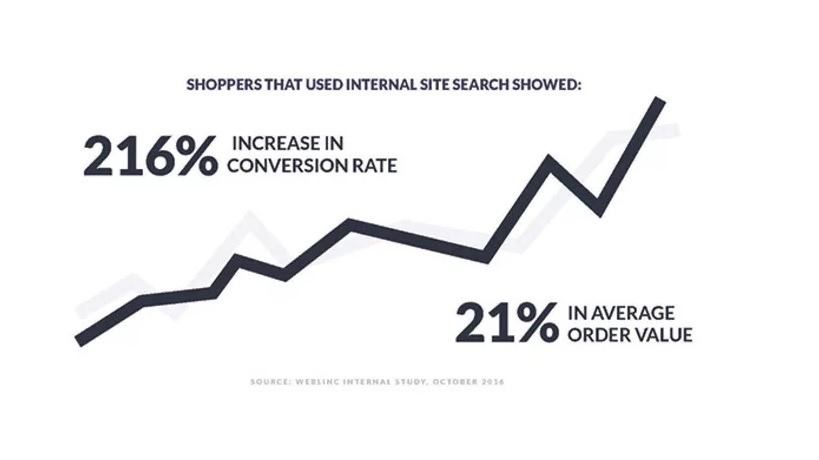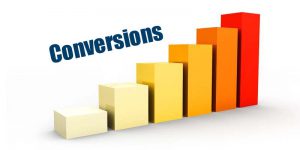In this part of the series, we’ll discuss conversion rate, a yet another crucial web metric to track, if you are not tracking it already. In this article, we’ll try to gain some insights into the importance of tracking this metric, the ways to track it, the ideal conversion rate that you should aim for, and other metrics that are directly linked to conversion rate…
So without much ado, let’s get started.
- What is conversion rate?
- Why is it crucial to track the conversion rate?
- How do you track the conversion rate?
- What is the formula to calculate the conversion rate?
- What should be your ideal conversion rate?
- What are the other metrics linked to the conversion rate (that you must track)?
- Bounce Rate
- Exit Rate
- Average Session Duration
- Average Page Depth
What is conversion rate?
The conversion rate can be defined as the percentage of visitors who completed a particular action on your website. It can be signing up for your newsletter, filling out a form, or completing a purchase. The conversion rate metric points to the success of your site. It goes without saying that a higher conversion rate leads to higher revenue or sales.
The one vital aspect that leads to a higher conversion rate is the landing pages of your site. This is the very first page that your prospects see. You may have different landing pages for different segments of prospects. So it is very important to test out different versions of the same landing page (A/B test) and find out which version performs the best. If you can do this test for all the different landing pages, you can maximize your lead generation and increase conversion rate.
A low conversion rate tells you that you are either failing to draw in your target audience or your site’s content is of low quality. Either the content is not well written or not providing the answers that your prospects are looking for on your site. If you find a sudden dip in conversion, then it is a tell-tale sign of a problem on your site that you must address immediately. It could be a broken link or a failed redirection or even slow load time.
Why is it crucial to track the conversion rate?
According to Jakob Neilsen, Co-founder of Neilsen Norman Group, “The conversion rate measures what happens once people are at your website.” The tracking conversion rate is highly imperative because it reveals a whole bunch of vital parameters about your website’s health. It could be the user experience, navigation, content, or some errors that need urgent attention or improvement.
The conversion rate is the most important metric that enables you to measure the profitability of your business. It can foretell whether your business has a bright future or not. And as mentioned earlier, you can use it to troubleshoot a serious problem within your site. This metric is essentially a measuring rod that enables you to optimize your website for providing the best user experience and thereby increase lead generation!
The conversion rate metric can predict what’s in store for your business in terms of sales! Your future success can be easily inferred by combining your historical sales data with the current traffic and of course, conversion data.

Here are a few vital reasons to track your conversion rates at all times!
- Even though you have a splendid conversion rate, you must not rest on your laurels. Track all your other web metrics regularly and discover how you can further improve your conversion rate. This can have a great impact on your company’s bottom line.
- By tracking conversion rates, you can bring down the expenditure on online marketing campaigns by uncovering the “friction points” in your conversion path.
- You can effectively nudge new prospects into your sales funnel by tracking and optimizing conversions regularly.
- You can bring down the cost-per-acquisition (CPA) by increasing your conversion rate. CPA is nothing but the money that you spend to obtain a new lead or customer. You may check out this useful post at socialmediaexplorer.com which explains why the CPA metric is important for your business.
The money saved by tracking and optimizing your conversion rate can then reinvested for growing your brand. You can spend that on online marketing campaigns, content development, and more. The cost of increasing your conversion rate is almost negligible, whereas the returns are highly rewarding. So invest in it now!
How do you track the conversion rate?
You can use a variety of analytics tools to track your website’s conversion rate. Our FoxMetrics analytics tool is one of those. If you are running an e-commerce site, the conversion rate is primarily measured by the number of people buying a service or product from your site. Most e-commerce platforms come with their inbuilt analytics reporting tool to track the conversions. If you don’t have one, FoxMetrics analytics can be seamlessly integrated with your e-commerce site.
Now if you have a regular website, it is measured by the number of people filling up a form, signing up to your email list (or newsletter), or completing a purchase. FoxMetrics analytics tools not just help you keep track of activities of prospects on your site, but also help you optimize your site for improved lead generation and conversions.
What is the formula to calculate the conversion rate?
Lead (or Sales) Conversion Rate = Number of Leads (or Sales) / Number of Visitors * 100
Let’s imagine that your website received 10,000 visitors in the last month and 200 of those visitors converted into leads. Then your lead to the traffic conversion rate for that period will be 200/10000 * 100 = 2%.
The importance of this metric cannot be emphasized more! If you are investing a big chunk of your effort and budget into driving enormous traffic to your site and that traffic is not converting well, then you are wasting your time and money. So increasing your conversion rate is as crucial as attracting targeted visitors to your site.
If you are looking to learn more about calculating conversion rate, then Jordan Dick at Venturi Web has written an in-depth post on this topic here.
What should be your ideal conversion rate?
We all like to see our conversion rates double, triple, or quadruple in our analytics tool, but the truth is, it is largely contextual. According to Peep Laja, the founder of ConversionXL, “The average conversion rate of a site selling $10,000 diamond rings vs an eCommerce site selling $2 trinkets is going to be vastly different. Context matters.”
Although your conversion rate is primarily dependent on your industry, it is still driven by a variety of other factors as well. It can depend on your traffic sources, quality of traffic, the volume of traffic, awareness of your brand, and the type of relationship you have with your audience, and so on. But if your conversion rate is higher than your last month’s number, then your marketing efforts are paying off.
If yours is an e-commerce site, an average conversion rate of around 2% to 3% is good enough, says industry leaders and other marketing experts. But there are some highly successful brands in the e-commerce industry that rake in an average conversion rate of 5% or more. However, most businesses in the industry claim a conversion rate of just around 1%.
As a matter of fact, you shouldn’t get overly worried about the conversion rates at all. Peep Laja at ConversionXL goes on to say that “a good conversion rate is better than what you had last month.” That’s all there is to it! Just strive for a higher conversion rate than you are currently making. Yes, you must definitely set goals for a higher conversion rate from time to time. And also have the means to check if you are meeting those goals. For instance, if your current rate is 1%, then try to notch up 1.5% in the next month. And when you achieve 1.5%, aim for 2% and higher.
Here are some useful tips to increase your conversion rate! Please watch this.
What are the other metrics linked to the conversion rate (that you must track)?
Tracking just your conversion rate is not enough to maximize your lead generation. It is also crucial to keep track of other vital metrics that are closely related to this. Some of those metrics include bounce rate, exit rate, and other user engagement metrics such as average page views and average time on site. You can effectively monitor these metrics using the FoxMetrics suite of an analytics tool and gain valuable insights into the areas of your site that need optimization.
Bounce Rate
The bounce rate is the percentage of prospects that are leaving your site immediately after viewing a page. If you have a high bounce rate then probably you need to work on your site’s content right away. It’s a serious red flag that you must fix immediately. It tells you that your visitors aren’t finding your site’s content engaging or helpful. But a high bounce rate can also hint at other technical issues like slow load time of pages or navigational problems on your site.
Exit Rate
The exit rate is the percentage of people leaving your site from a particular page or a group of pages. Put differently, it is the last page that the visitors viewed on your site. Your prospects may have landed on a different page, but found their way to a particular page and left the site from that page. This metric shouldn’t be confused with the bounce rate, which is the percentage of people leaving your site from a single page (that’s the only page they viewed on your site). Exit rate yet another crucial red flag, especially when that page should have led the visitors to another page on your site. The pages with high exit rates must be immediately scrutinized for errors, content quality, and optimized.
Average Session Duration
This user engagement metric can be viewed as an exact opposite of the bounce rate. This metric reveals the average duration that your visitors spent on your site. It is calculated by dividing the total duration (in seconds) of all sessions by the number of sessions. A session is nothing but the amount of time spent by a visitor on your site. The higher the number for this metric, the better is your chances to convert that prospect into a lead or a customer. This number tells you that your visitors are finding your site and its content appealing and helpful.
Average Page Depth
Average page depth is another user engagement metric that tells you how many pages were visited by your prospects on an average before they left your site. This metric can signal an increase in user engagement, but it may also mean that your prospects are drifting away from your sales funnel; especially when the conversions are lower despite a high “Average Page Depth” figure.
Conclusion
As mentioned earlier, the importance of tracking conversion rates cannot be stressed enough. And to track that effectively, you need the best tool in the market at your disposal. It shouldn’t just track and spit out some numbers, but also suggest you the best possible steps to improve your conversions. That’s exactly what our suite of FoxMetrics analytics tools are designed to do. It can do a lot more than just tracking your metrics. You can learn more about FoxMetrics tools here.
If you’re thinking of personalizing the experience of your visitors, try FoxMetrics for free and Subscribe to our Newsletter get recent updates and news.

